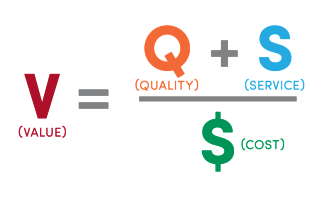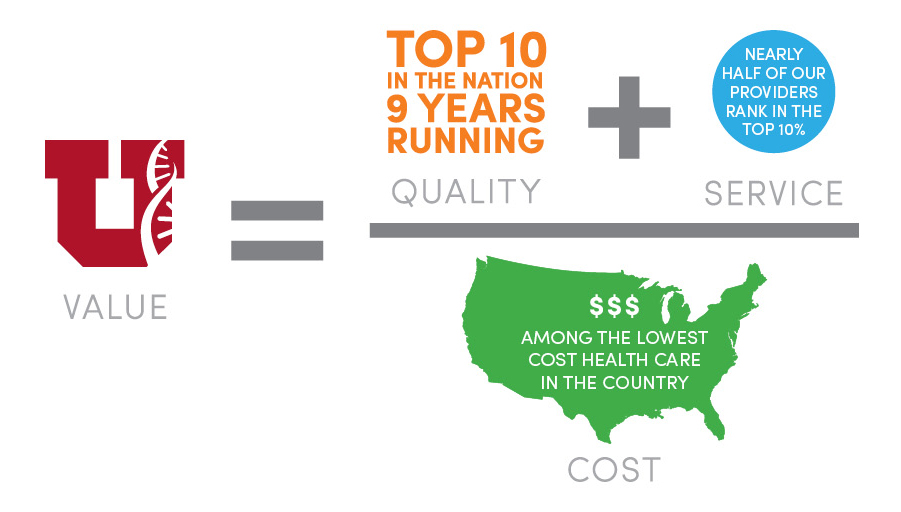Ten years ago, University of Utah Health embarked on a value journey to provide the highest quality care and an exceptional experience at an affordable cost to each of our patients. While
we’ve made bold moves and steady progress, we still have a long way to go.
University of Utah Health undertook the Value in Health Care Survey to help clarify how three key stakeholder groups perceive value as a concept and how they prioritize the three components of our value equation—quality, service, and cost. In doing so, we hope to reinvigorate the national conversation on achieving a value-focused health care delivery system.
For University of Utah Health, value is defined as the key element in a specific theoretical framework: Value is the product of the quality of care plus the patient experience at a given cost. We have translated it into an equation that can be used as the starting place for calculations of “value.”
In this equation, value is a composite of the shifting relationship between levels of quality, service, and cost in the provision of health care. Adapted from a concept first proposed by Harvard Business School’s Michael Porter, University of Utah Health created a value equation to help our organization and other health care delivery systems reward caregivers for
providing the right care, versus simply more care. Service was added to Porter’s equation to give the patient an equal voice in determining value.
We believe this value equation can build a shared understanding of how major stakeholders define, weigh, and calculate value. This equation formed the basis for the line of questioning in the Survey, and we believe it will help move the system toward better value for all stakeholders.
So far, we’re proud of our successes. By focusing on quality, Vizient has ranked us as one of the nation’s top 10
academic medical centers for the past 11 years. Because we value the patient’s voice, we were the first academic
medical center to post patient reviews online. Today, nearly half of our providers rank in the top 10 percent
nationally for patient satisfaction. And because we know that quality and service don’t matter if patients can’t
afford our care, we continue to develop innovative tools like Value Driven Outcomes to better understand—and
then reduce—our costs. None of this would be possible without our remarkable 24,000 team members. We
believe there’s a way to do it better—and together we can find it.

